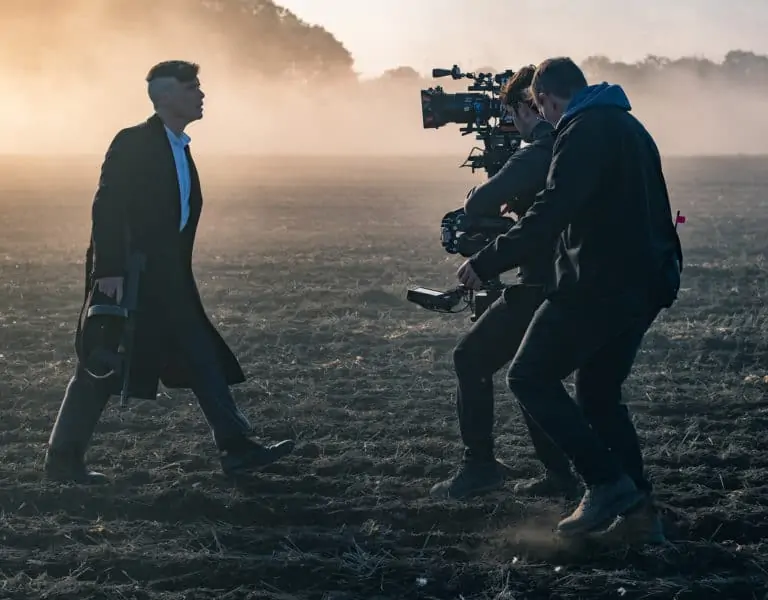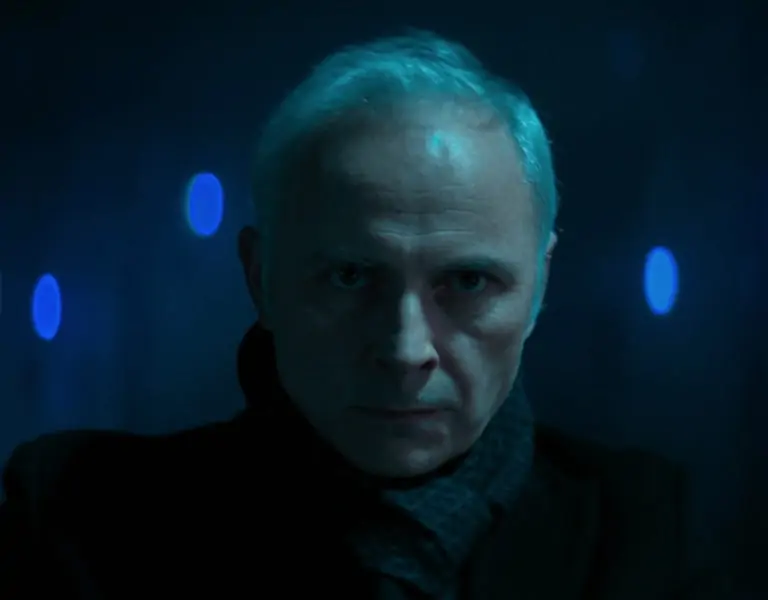GRAND FINALE
An epic and stylish gangster family series set in 1900s England envisioned by Steven Knight and embodied by Cillian Murphy gets an appropriate BBC Two send off.
Five days before principal photography was to begin on season six of Peaky Blinders, the production shut down because of the pandemic. While discussions took place as to how to get the period crime drama up and running again, scripts were rewritten, and the decision was made that this would be the series finale, with the story of Thomas Shelby (Cillian Murphy) and his criminal empire living on in a feature film.
Upon joining Peaky Blinders for season five, it was important for director Anthony Byrne (In Darkness, Ripper Street, Mr Selfridge, Butterfly) to continue his relationship with Focus24/Canning24 director Jamie Hutchinson. “Canning24 worked hard to make it work for us and to get us all of the things that we needed for the show because they value their relationship with me and previously with Si Bell (In Darkness). I am proud of the fact that Jamie and Canning24 have grown and they’re working on all of these big shows for the streaming platform. In the middle of all of that I ended up meeting Jarred Land at RED who is also a big supporter of Jamie.”
1st AC Tom Finch also appreciated the support of Canning24. “Our shoot took us to the far reaches of Scotland, in February, and that brought with it the challenges of extreme weather conditions and being in a remote location. This was no problem for Canning24 and they were able to supply us with supplementary pieces of equipment without delay, even with the 14-hour round trip by snowy road.”
A new collaboration the Irish director formed was with French cinematographer Mathieu Plainfossé. “Knowing the arc of the season, I knew what I was looking for and Matthieu’s work jumped out at me. He had just shot La Révolution for Netflix in France and was able to share some footage and screengrabs which helped to secure the approval from the BBC and Caryn Mandabach Productions. It was an absolute joy to work with him.”
Shooting all six episodes with Byrne streamlined the process for Plainfossé and allowed for more flexibility. “You can organise everything over four months and later adjust your timing with the actors’ schedule because they’re not always available,” he says. Where things did get complicated was not shooting in episodic blocks. Plainfossé elaborates: “That’s a challenge and you’ve got to keep track of it. At the same time, the vision for the whole show is Anthony’s.”
Throughout the series, the past is entwined with the present. The crew often used the word ‘gothic’ during the shoot. “Peaky Blinders is like a Western graphic novel,” says Byrne. Continuity comes from the actors, set design, and costumes. “Season six is probably the darkest,” adds Plainfossé. “The question was, ‘How can we amplify the darkness and sadness of this season?’ That was what guided my first research and then we made choices. In season five, a lot of practical lights were on during the daytime, and I then decided to switch off the lights because what happens is so sad. It is like you’re going from one ghost scene to the next.”
Only one sequence was storyboarded as Byrne had the whole series mapped out in his head. “Mathieu and I didn’t want to pre-light anything,” says Byrne. “It’s about 90 percent locations, so we were always on the road. We would let the actors come on, work out the scene, I would figure out the shot within the space, and then we would light it. I spent months with the location supervisor driving around the north of England and then we had a separate location scout for Miquelon Island.”
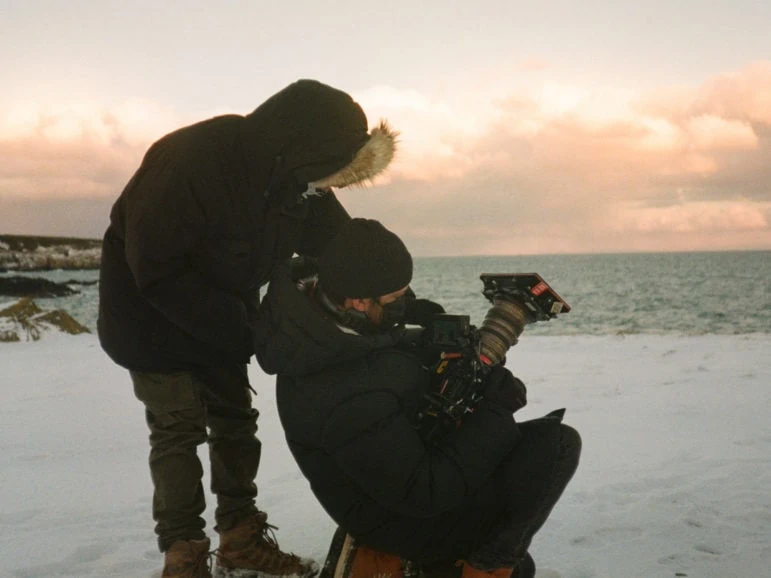
THE SIGNATURE LOOK
Dealing with the natural elements often meant having to endure the cold. While the weather was not pleasant to shoot in, it looked great in camera. “Miquelon Island was hilarious because Danny Hargreaves [special effects supervisor] brought what looked like a huge jet engine, and he had one out at sea, and another on land which would release these immersive clouds of fog. I remember Cillian stopping during a take and saying, ‘I can’t see a bloody thing!’ That was how dense it was,” says Byrne.
There was also natural fog, as featured in the opening field scene with Shelby. “The atmosphere and fog are part of the signature of Peaky Blinders,” observes Plainfossé. “From the beginning, we knew we were going to use them. What’s interesting about this scene is Anthony tries to make you feel that you’re inside the head of Tommy. It’s a dream with an element of reality.”
Two RED Ranger cameras with a Monstro sensor were deployed along with a RED Komodo. “The Ranger was easy to use on set because of the ergonomics, better output for video, and great power for accessories,” says Plainfossé. “We can talk about resolution but what is more important is the size of the sensor. The Komodo is really small, could go inside a car, and Anthony likes developing his shots with the handheld camera. There was not much time to customise camera and lighting rigs. We mostly used the ARRI Trinity, dolly, Technocranes, and DJI Ronin which could be placed on the dolly or replace the Steadicam.”
Footage was captured 8K. For budgetary reasons, they had to compress to 8:1 and shot 2:1 which is slightly wider than 16:9 and is the native ratio of the RED so they were using the full sensor.
No specialised LUTs were created. The plan was to use the normal LUT from the camera which is a classic Rec.709. “Each time we were shooting, the DIT downloaded the rushes into his laptop and started to adjust to get the right tone for the scene. We built it on set,” says Plainfossé.
Byrne and Plainfossé started by shooting with Cooke Anamorphic Prime Lenses for the field scene to maintain continuity with season five. “We then go to the cleaner glass of the Leica R lenses for Miquelon Island [and the US] and shot the bulk of the season [which takes place in Birmingham] with Zeiss Supreme Prime Radiance,” reveals Byrne. Full sets of each type of lens were used. Zeiss Radiance ranged from 21mm to 100mm, but they mostly shot with the 29mm and 35mm, and also used the Leica R 35mm.
A conscious decision was made to avoid direct light through the windows, Plainfossé instead wanting to bounce the light. “It helped to achieve a softness and control the ambience,” he says. “For the inside, I used mostly LiteMats which have a diffusion in front of them and are really light so it’s easy to place them. We could plug them into a gaffer box, or we could choose the intensity of the light by the monitor without someone needing to use the dimmer.”
Providing the necessary mobile power were Anton/Bauer batteries. “We opted for Anton/Bauer VCLX 14/28v block batteries which covered both our camera power and our monitoring village. Having a power source that covered between 14/28v is an absolute dream for us because it meant we only had to carry one type of block battery on location,” says Finch.
“We also utilised the Anton/Bauer Gold Mount Dionic XT, and Titon SL & Micro batteries to run onboard our cameras and monitors. These are a beautifully versatile option as they come in multiple sizes and capacities from 95-156WH which meant they could be mounted on the back of small handheld monitors and also power the cameras quite happily whilst in handheld or on the Steadicam. All of the Anton/Bauer batteries worked without fail in some of the hardest conditions you will find in the UK, and this meant that the show could carry on, no matter how cold it was or how far we had to trek with them. Other key Vitec Group production gear included OConnor supports, Small HD monitors, and Teradek wireless solutions.”
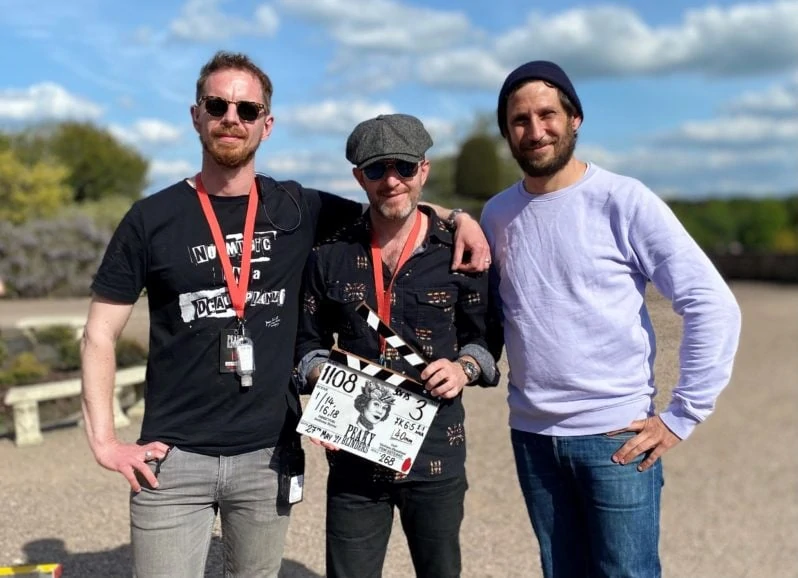
–
This is a sponsored article, created in partnership with Focus24/Canning24 and Anton Bauer.
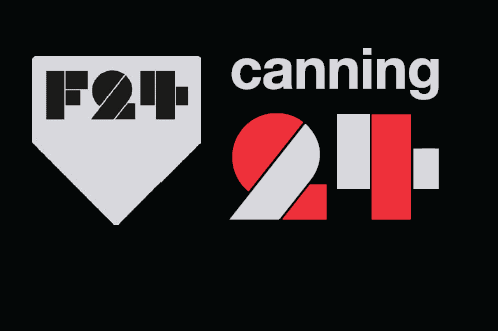
Focus24
Focus24 is proud to have supported some of the industry’s most exciting talent and been depended on for tens of thousands of productions. Combining with Picture Canning in 2019, ‘Canning24’ was born as a new feature film and drama team which has already supported some of the industries most beloved programmes.
Whether it’s through industry leading facilities or the trusted hands of the team, its ethos is to elevate creativity and maximise efficiency through partnerships with its loyal following.
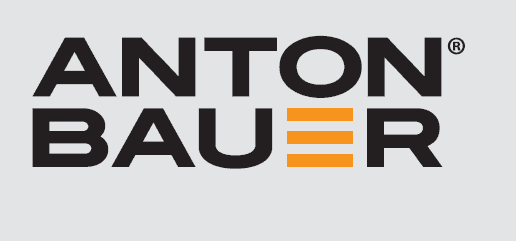
Anton/Bauer
Anton/Bauer® is a leader in the design, manufacturing, and testing of battery power systems for use in broadcast, cinematography, and content creation. Its rugged systems can be adapted to just about any situation where reliable, mobile power makes the difference.
Whether on a movie set, on top of a mountain, or on a sports field, Anton/Bauer’s Mobile Power Systems consistently prove to have the highest quality and reliability available. The company holds many patents and awards for advancements in battery-system technology, including an Emmy® Award for Outstanding Achievement in Engineering Development and a Sci-Tech Academy Award®.








